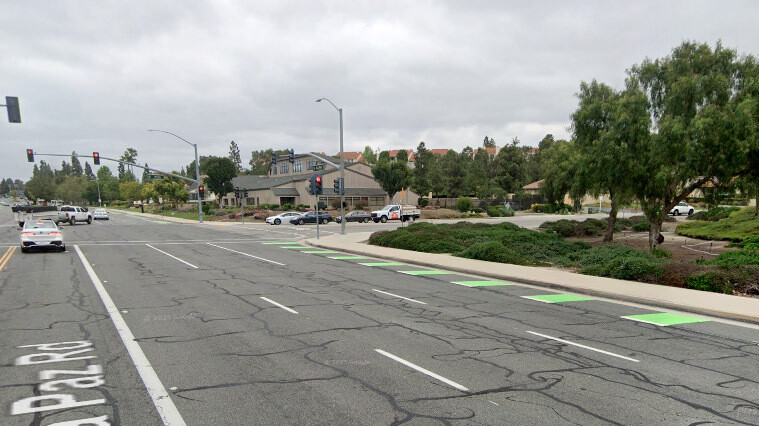Q: Just wondering: What is the special meaning of the green markings in some right-hand turn lanes? I’ve seen them at several places in Laguna Niguel and elsewhere.
– Marilyn Odgers, Laguna Niguel
A: When you see green on a street’s asphalt or concrete, think bicyclists.
Marilyn is referring to a string of solid-green rectangles that kind of look like a railroad track.
The rectangles tell motorists, those driving trucks, motorcyclists and bicyclists to share that part of the roadway — those rectangles can be an extension of a bike lane.
You will see them placed where motor vehicles and bicyclists must share the lane — say, as Marilyn pointed out, where a car needs to cross over the bike lane to make a right.
“They can be put anywhere there is a shared lane,” said Jacki Scott, the city’s public works director. “It’s a way to grab more attention.”
Laguna Niguel’s first green markings went in two years ago, Scott said, and more are on the way.
Q: Honk, I read with interest your discussion last week about handicap placards. My wife has been in a wheelchair for the past 10 years and we have one. I have never seen any enforcement by anyone checking to see if the person using the placard is in fact the eligible user. What agency is responsible to enforce the law? Are there any statistics showing enforcement rates?
– Bob Herrmann, Rancho Mission Viejo
A: Honk didn’t find any stats on this violation, but he suspects few people are cited for illegally using a disabled-person parking placard or license plate to park.
Officers and deputies over the years have told Honk that you can’t tell if that seemingly healthy person isn’t — maybe their doctor says a long walk is bad for their ticker, or there is another health issue in play. And remember: The driver isn’t necessarily who the placard or plate was issued for — it could be for the passenger, or for the person about to be picked up.
So scofflaws aren’t necessarily easy to spot.
Many, if not all, sworn police officers or deputies in the state can enforce this law.
“If a deputy sheriff has reasonable suspicion that someone is not disabled and is possibly abusing the regulations of the handicap placard, then, yes, they can be detained to identify the subject and run the placard number through a law-enforcement database to verify the subject is in legal possession of the placard,” traffic Sgt. Kyle Ishii, of the Orange County Sheriff’s Department, which patrols your neck of the woods, Bob, told Honk in an email.
“Now, this is not a practice that deputies commonly exercise,” he said. “Usually, deputies would approach the situation more as a consensual encounter and ask necessary questions to determine misuse.”
Deputies understand, the sergeant said, how disabilities can be a sensitive topic.
“However, we still have a community-caretaking duty to ensure that handicap parking is readily accessible to those in need and that we enforce (proper use) of these placards if possible,” he said.
HONKIN’ FACT: A Fullerton police officer recently pulled over a driver for a traffic violation and was handed a Monopoly “Get Out of Jail Free” card. The cop chuckled, handed it back to the motorist with a citation. The driver, Fullerton police reported, drove off with a smile.
To ask Honk questions, reach him at honk@ocregister.com. He only answers those that are published. To see Honk online: ocregister.com/tag/honk. Twitter: @OCRegisterHonk
